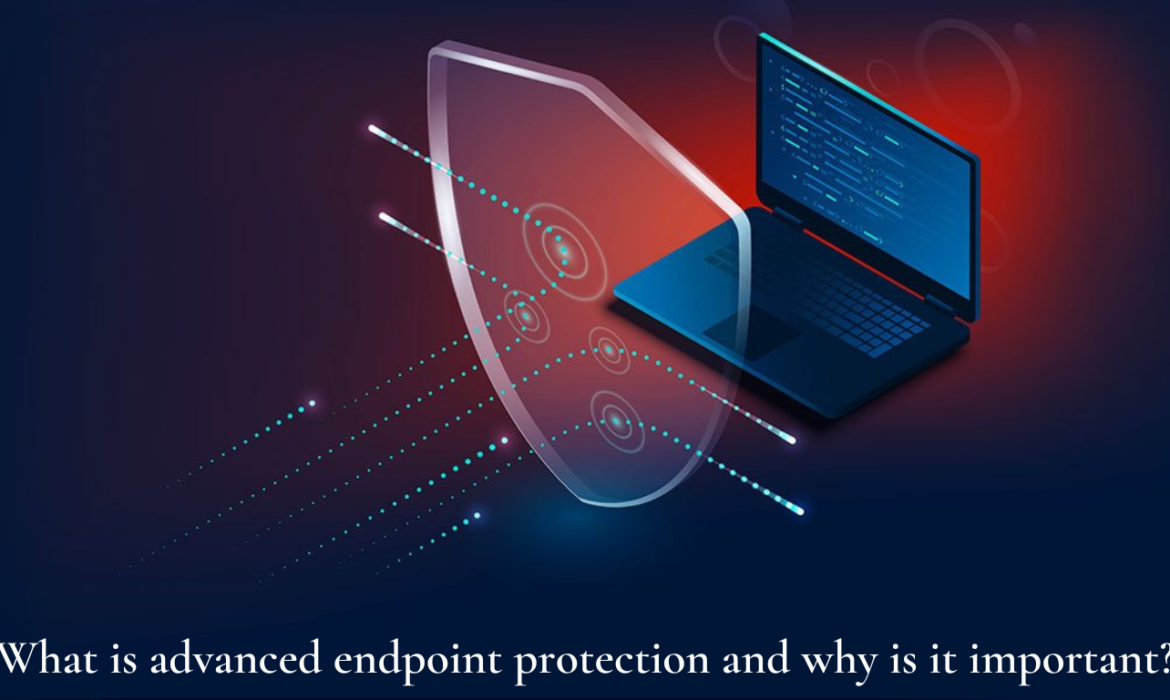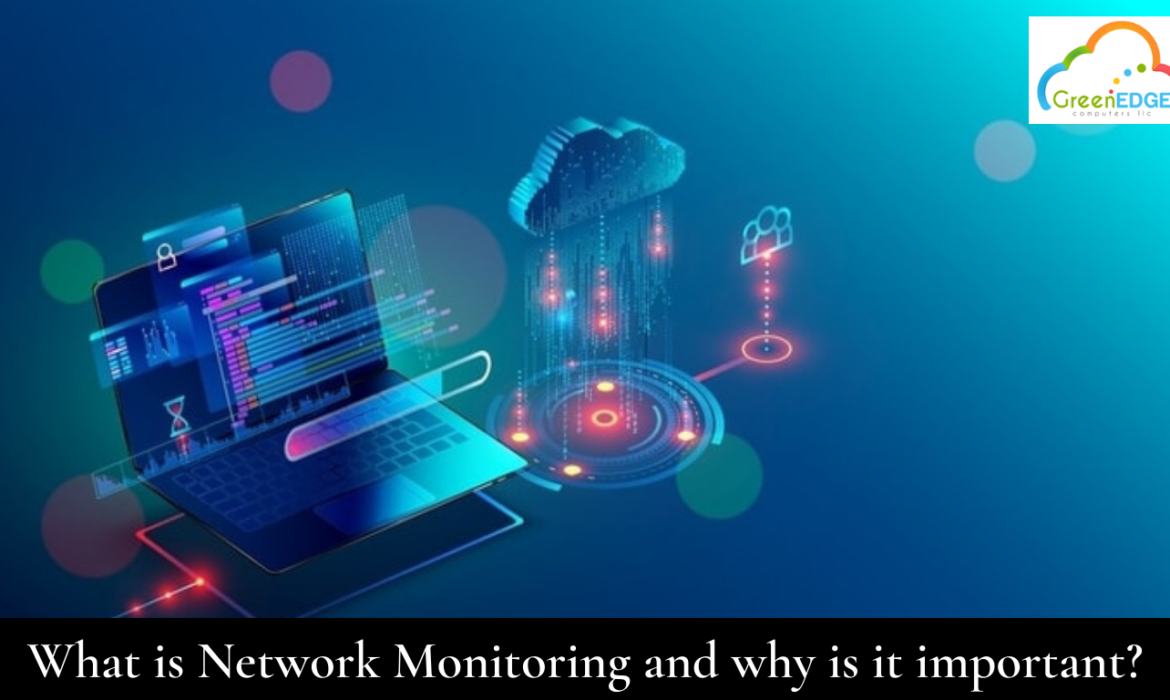What is advanced endpoint protection and why is it important?
Advanced Endpoint protection is a type of software designed to help protect endpoints (network computers) from being attacked.
Endpoint protection is a type of software designed to help protect endpoints (network computers) from being attacked. As we mentioned before, endpoint security is a subset of endpoint protection.
Also read: How intelligent Automation helps in simplifying the customer service experience?
What are endpoint protection services?
Advanced end point protection provides increased security above and beyond that of traditional endpoint protection. The main difference between the two is that advanced end point protection looks for threats. That is unfamiliar or has never been seen before, while traditional endpoint protection only looks for known threats. Advanced endpoint protection also uses behavior analysis to identify malicious activity based on how it behaves. Which can be an advantage when looking for new types of attacks. For example, if you know your organization has been targeted by malware. In the past but never had its policy updated to cover this type of event. An advanced endpoint protector may be able to detect it as a new threat because it doesn’t sound like something they’ve seen before (e.g., “This particular piece of code wouldn’t be used normally—but maybe because it’s meant to avoid detection?”).
Also read: How to save your business from Online data theft
Which things include in Endpoint protection?
Advanced endpoint protection may include things like machine learning and behavior analysis.
- Machine learning is the process of analyzing data to make predictions. About the future or predict future outcomes based on past behavior. For example, a company might use machine learning to analyze. How many times have customers purchased certain products? And then used this information to predict what customers will purchase in the future. This type of analysis can also be used for cybersecurity purposes by looking at historical data on who has been affected by phishing attacks or malware infections, which would allow you to better understand your risk profile and learn from previous mistakes made by others who have fallen victim to similar attacks time after time again!
Also read: How to secure cloud infrastructure?
Endpoint protection software?
Legacy antivirus software and other tools may leave gaps in protection that can be exploited by hackers. Advanced end point protection steps up to the plate to fill those gaps, providing a complete picture of your network’s security.
Advanced endpoint protection uses a variety of techniques to find and protect against malware infections on every endpoint—from desktops and laptops to mobile devices like tablets, smartphones, and wearables (like Fitbit). It also prevents advanced threats like ransomware from infecting your machines or stealing sensitive data from them.
How works endpoint protection software?
In a world of sophisticated hacking attempts and attacks, advanced end point protection offers a more robust level of protection, especially against unfamiliar threats.
Advanced endpoint protection is the most comprehensive approach to protecting your computing environment against malicious code. It combines multiple layers of security into one solution that can be deployed across multiple devices in your home or business network. This approach not only provides comprehensive security from hackers but also helps you stay protected from viruses, spyware, Trojans, and other types of malware that may be lurking on your device or device’s internet connection at any given time.
While traditional endpoint protection systems help protect users from external threats like phishing scams and social engineering tricks (such as locking down their browser), they don’t do much for preventing internal attacks such as SQL injections or Cross-Site Scripting attacks because these kinds of vulnerabilities are often more difficult to detect than an external attack
Also read: What is Network Monitoring and why is it important?
Conclusion
Advanced endpoint protection software helps prevent malware from getting on your computer, while also providing remote access to your desktop or laptop if you need it. It can also keep viruses and other malicious files out of the system entirely.
Greenedge computers provide you with the best endpoint protection for your business. If you want to know more about our endpoint protection software then contact us now and get a free quote with us:
What is Network Monitoring and why is it important?
Cloud based Network monitoring is about keeping an eye on your existing network. It’s not about finding the next great security product or cool tool to help you build a better network. Network monitoring is the process of looking at your existing environment and making sure that everything is running smoothly.
Also read: Client data protection: How to protect endpoints with a multi-layer security strategy?
What is Network Monitoring?
Network monitoring is about maintaining the health and well-being of your existing network. It does not deal with fixing problems, but rather prevents them from happening in the first place by collecting data from your network, analyzing it, and taking action based on the analysis.
This means there is no need for expensive tools or hardware as you can monitor all aspects of your infrastructure through simple tools like Nagios or SNMP Community Managers (SNMP CM).
Benefits of Network Monitoring
- Measure the performance of your network. Cloud based Network monitoring tools can help you measure the overall health and performance of your network.
- Detect and diagnose network problems before they become serious issues, such as a crashed server or an attack on one of your servers.
- Monitor for changes to traffic patterns (for example, if someone is downloading files from another site). This can help you detect an attack in progress or identify other anomalies that may indicate a problem with security measures like firewall rules or intrusion detection systems (IDS).
- Improve the availability and efficiency of networks by detecting failures before they affect business operations directly—and reducing downtime caused by outages when possible!
Also read: What is Continuous Service Improvement with Intelligent Automation?
What to Look for in a Network Monitoring Solution
To be sure you’re getting the most out of your Cloud ased Network monitoring solution, here are some things to look for:
- What features should be included in a network monitoring solution? This can vary wildly depending on what kind of organization you run and how many employees there are. If it’s a small business with just one IT team. And no more than five people need access to the Internet at any given time. Then maybe all they need is an email account (and maybe not even that). However, if they have more than 10 employees on their payroll or if they run their own eCommerce websites or host events through their website like Ticketmaster does every day of the week—that’s when having some type of network monitoring becomes critical!
- How do I evaluate this solution? There are plenty of different options out there. So much so that it’s hard to choose just one without knowing exactly what kinds of features each product offers! So let’s break down how we would go about evaluating these products. So that we can figure out which one best meets our needs (and budget).
Also read: How intelligent Automation helps in simplifying the customer service experience?
How to get started with network monitoring
To get started with Cloud based Network monitoring, install network monitoring software. There are many free tools available online and in the market that can help you monitor your network.
The next step is setting up alerts so that you are notified of any issues immediately. You can set up notifications such as email or text messages when there is a problem with the server or if it’s abnormally slowed down. If a customer has complained about this issue on social media then it would be good if we could notify them directly instead of waiting for them to complain again later!
Also read: How to save your business from Online data theft
Network monitoring is about maintaining the health and well-being of your existing network.
Cloud based Network monitoring is about maintaining the health and well-being of your existing network. It helps you to identify and resolve problems before they cause downtime, gain insight into your network performance, and improve the performance of your network.
Network monitoring is an essential element in ensuring that you maintain a high-quality connection between all devices on your network. Without it, there would be no way for anyone to know if something has gone wrong with a particular device or service—and without knowing what’s happening with those components (or whether there are any problems), it would be difficult for users or IT staff members to fix them when necessary because they wouldn’t know where exactly these issues lie within their systems’ architecture.
Also read: How to secure cloud infrastructure?
Conclusion
Cloud based Network monitoring is an essential component of any IT infrastructure. It’s a great way to ensure that your network is running at peak performance and that it’s not being affected by outside factors, such as power outages or natural disasters. If you have any questions about how to start monitoring your own network, please feel free to contact us today!
How to secure cloud infrastructure?
How to secure cloud infrastructure: Cloud infrastructure has become the go-to tool for modern businesses. It allows companies to scale up and down their servers as needed, making it easier to manage the workloads of employees and applications. But while cloud infrastructure can be beneficial, it isn’t immune from security issues. In fact, cloud providers are no longer just offering you a platform; they’re offering access control, monitoring, encryption, and more–all of which can make securing your data even harder than usual. So how to secure cloud infrastructure? Here are our top tips:
Also read: How to save your business from Online data theft
Ensure you’re logging all activity in a way that makes it possible to monitor and detect changes.
- Make sure that you’re logging all activity in a way that makes it possible to monitor and detect changes.
- Logs should be stored in a central location so that they can be searched for specific events. If your organization has multiple cloud infrastructure providers, then there are likely different log management platforms being used by each provider’s teams. It’s important to ensure these platforms are compatible with one another so that users can access their logs from anywhere—and not just where they originate from!
Make sure that you have a way to be alerted when something happens.
- Use monitoring tools. There are many open source and commercial software packages available for monitoring your cloud infrastructure, including:
- A log file analyzer that will check the logs for certain events (such as a security breach) and alert you when they occur.
- An incident response plan specifies how you’ll deal with incidents, such as accessing data from third parties or restoring services after an outage.
Also read: How intelligent Automation helps in simplifying the customer service experience?
Test your alerting systems.
- Test your alerting systems.
- Make sure they work correctly before you have an emergency.
- Test them on a regular basis, and plan to test them during a real emergency scenario.
- False alarms are not uncommon in this field, so be prepared for them!
Automate everything possible, but make sure that you can turn off the automation if needed.
How to secure cloud infrastructure: Automation is a great thing. It helps you achieve your goals faster and more reliably, but automation can also make mistakes if not used properly.
It’s important to remember that even though you may have automated something, there are still people who need to manually do their jobs as well. For example, if you’re running an infrastructure that uses virtual machines (VMs), then someone has to maintain those VMs every day or week depending on how often they’re needed for development purposes or other projects within the organization. In addition, if any part of the system goes down due to external factors like power outages or hardware failures—or even just because someone forgot about it—then those VMs will be lost forever because there won’t be anyone available who knows how they work! So don’t forget about human fallibility when thinking about automation; remember that humans are still required by law when it comes down to implementing proper procedures within our systems at all times.”
Also read: What is Continuous Service Improvement with Intelligent Automation?
Use multifactor authentication for everything–logins, approvals, etc.
You should use multifactor authentication for everything–logins, approvals, etc.
If you can’t use 2FA on your cloud infrastructure vendor’s systems (like Office 365 or AWS). Then make sure that whenever possible you’re using 2FA wherever possible. The more layers of security there are between you and the data in your cloud environment, the better. For example:
- Don’t use the same password and username on multiple systems
Also read: Client data protection: How to protect endpoints with a multi-layer security strategy?
Change passwords for all accounts when an employee leaves.
As soon as you hire a new employee, it’s important to make sure. That they are given the same password on all systems. After all, if you have multiple cloud accounts and servers. They need access to each other, a compromised account could lead to data loss or even theft of sensitive information.
How to secure cloud infrastructure: When changing passwords for users who leave your company, be sure not only that their old passwords are changed. But also that any other accounts with shared credentials are changed too. It’s also important not to use personal information in creating new ones. So as not to expose yourself or anyone else at your company. If they happen upon them online during an investigation into breaches by hackers looking specifically for “weak” passwords.
Don’t use too many root-level users.
One of the most common mistakes that people make when it comes to securing cloud infrastructure is using too many root-level users.
Root-level accounts are the most powerful accounts in a system and have full access to all files and systems. This makes them more likely to be targeted by hackers than any other type of user account. Because of this, you should only use root-level accounts for system administrators who need full control over an entire server or network (for example web developers).
Also read: Benefits of Data protection | Datto
Don’t use the same credentials on multiple systems.
How to secure cloud infrastructure: Don’t use the same password and username for multiple accounts.
In general, this means that you should not be using a single password or username on all of your cloud infrastructure systems. For example, if you have a user account called “user1” in one system and another user account called “user2”. In another system (and they’re both valid), then it’s important that this is not shared between those two systems. You want each system to have its own unique set of credentials used by only its users (or at least everyone who has access).
Have a backup procedure, and make sure that you’re training all employees in the correct procedures for backing up data.
As a cloud provider, you’re only as good as your backup procedures. Make sure that everyone knows how to perform backups and test them regularly. Backup data should be stored in a different location. Then the original data and encrypted so it’s safe from prying eyes. Finally, make sure it’s stored offsite in case of an outage or other calamity. This will ensure that even if someone steals or misplaces valuable information. They won’t be able to use it until you get it back!
Also read: Best data recovery company near you: Datto
Implement role-based access control for your system, and be as granular as possible with permissions.
How to secure cloud infrastructure, you should be using role-based access control (RBAC). RBAC is a way to manage access to resources and make sure that only the users who need them have access. It can also be used to restrict users from accessing certain resources in order to prevent unauthorized actions or violating corporate policies.
For example, if you have an application where users need full control over certain things like data or code but don’t need permission over others like APIs or services on other servers owned by someone else (like Amazon Web Services), then this would be an area where RBAC would work well because it lets each user define exactly what they’re allowed to do within their context of influence—and no one else has any say in how much authority they’re given over those tasks either!
These simple strategies will help keep your infrastructure secure and save you time and money.
These simple strategies will help secure your infrastructure:
- Use familiar tools. If you’re the type of person who uses a certain tool or framework, use it again when securing your cloud infrastructure. For example, if you use AWS for all of your DevOps needs and want to make sure everything is running smoothly, then ensure that any updates (such as security patches) are applied as soon as possible using standard processes within AWS. If there are specific issues with a specific application running on AWS (e.g., publishing apps), create policies that enforce these requirements so that nothing goes wrong during deployment or post-deployment operations like scaling up/down servers due to lack of resources in the cloud environment itself rather than just within EBS volumes attached directly from source control repositories where users may not be aware how many snapshots already exist before they start building their own project builds etcetera…
Also read: What is the data recovery cost in Dubai?
Conclusion
I’m sure there are other points of view on this topic. But I think these seven strategies should get you started down the right path. The best thing that you can do is really think through how your organization works. And what goals they want to achieve before implementing a security strategy. It’s also important to remember that while all of these tools can help keep things secure. It’s still up to each user in your organization to make sure that they’re doing everything possible to protect themselves from an attack or compromise.





